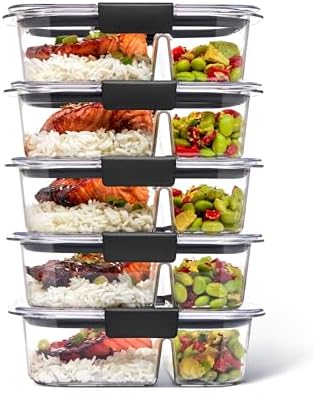Keto on a Budget: Strategies for Affordable Low-Carb Living
This post may contain affiliate links. If you purchase through these links, I may earn a small commission at no extra cost to you. LEARN MORE.
Eating a keto diet doesn’t have to cost a fortune. Many people think that sticking to this low-carb lifestyle means spending a lot on groceries.
By selecting affordable, low-carb foods and planning meals ahead, anyone can maintain a ketogenic diet without breaking the bank.
Think about how ground meats, eggs, and non-starchy vegetables can become staples in your kitchen without emptying your wallet.
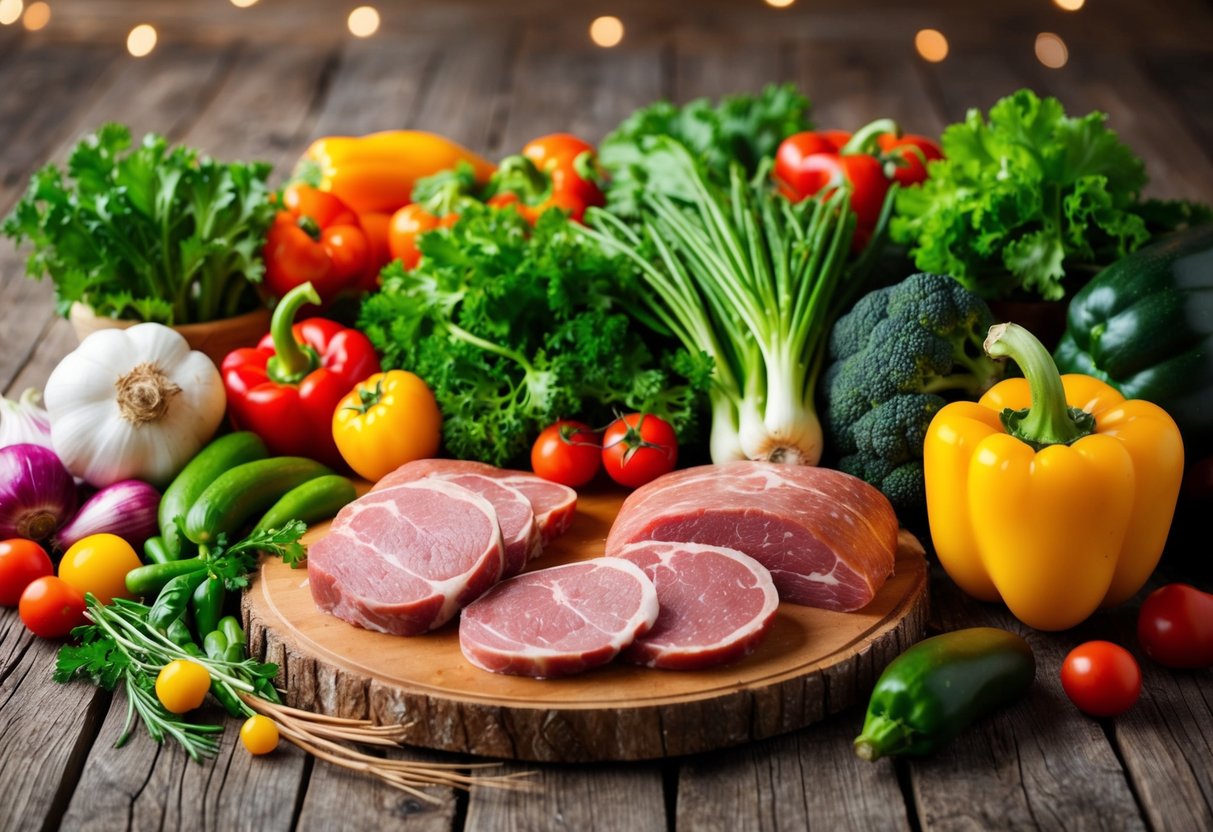
Meal planning and buying in bulk are great ways to save money on a diet. Making a list before shopping helps avoid buying unnecessary items.
Cooking in batches also saves time and reduces food waste, making the diet sustainable for the long term.
Sticking to simple, whole foods is key. Avoid expensive pre-packaged “keto” snacks and opt for nutrient-rich options like canned fish, bulk nuts, and cheaper cuts of meat.
These choices will help maintain a healthy ketogenic diet without overspending.
New to keto? Start with our Keto Diet for Beginners guide for a solid foundation.
Ready to customize your keto journey? Check out our Custom Keto Diet for personalized meal plans that include delicious low-carb recipes!
Key Takeaways
- Planning and buying in bulk make keto affordable.
- Simple, whole foods are budget-friendly.
- Avoid costly pre-packaged keto products.
Understanding Keto Basics
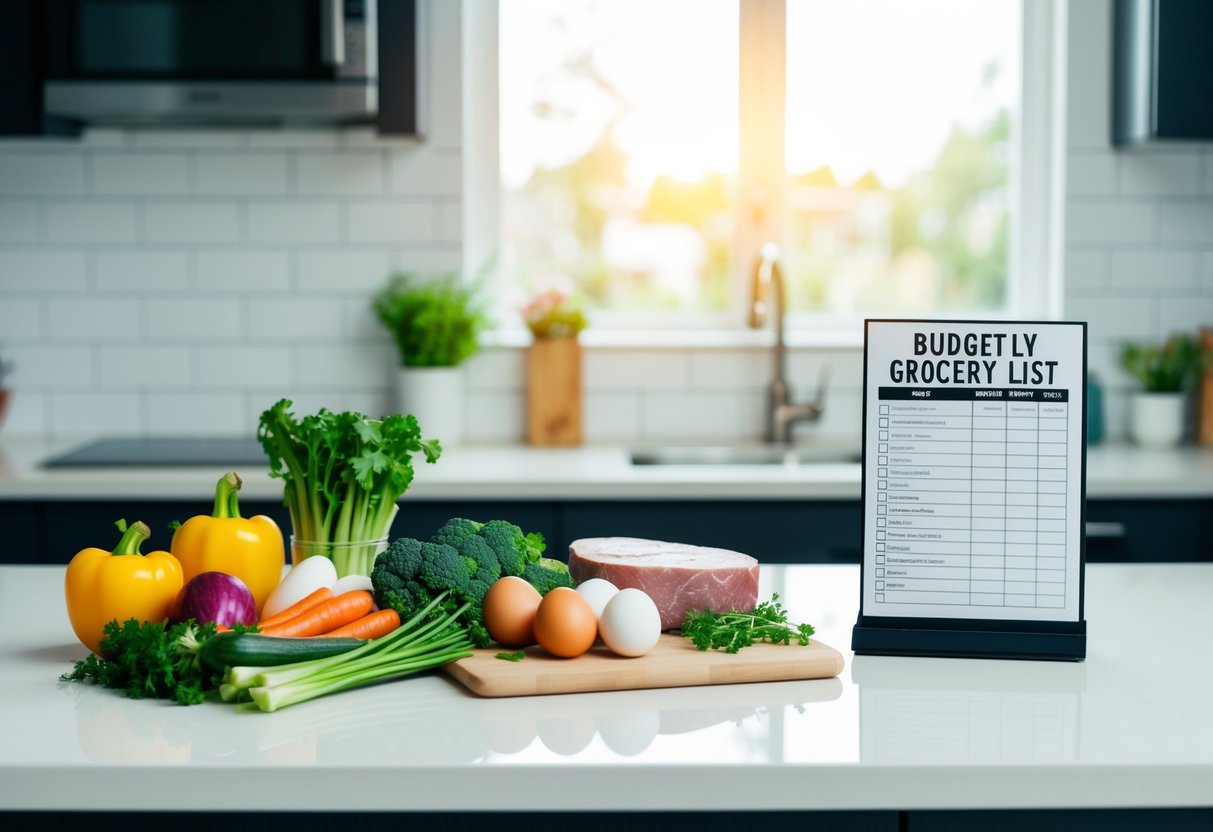
The ketogenic diet is a high-fat, low-carb eating plan that encourages the body to enter ketosis. By adopting a low-carb lifestyle, individuals can experience benefits like weight loss and increased energy.
What is a Ketogenic Diet?
A ketogenic diet involves drastically reducing carbohydrate intake and replacing it with healthy fats.
This change shifts the body’s metabolic state to ketosis, where fat becomes the primary energy source instead of glucose.
In ketosis, the liver converts fats into compounds called ketones, supplying energy in the absence of carbs.
Net carbs are important here. They are the total carbohydrates minus fiber, used to calculate carb intake.
High-fat foods like avocados, cheese, and oils are important components. Meanwhile, low-carb veggies, such as spinach and broccoli, help fill the plate without exceeding carb limits.
By controlling carb intake, people can maintain ketosis and potentially achieve results like improved focus and weight loss.
Benefits of Staying Low-Carb
Following a low-carb diet can lead to several health benefits. One of the most common reasons people adopt it is for weight loss.
Lowering carbs can reduce hunger, leading to fewer calories consumed. People may find it easier to maintain a calorie deficit that helps shed pounds.
Increased energy is another benefit. With fat being a more sustained energy source, many individuals report stable energy levels throughout the day.
This stability may also enhance mental clarity, allowing for better focus on daily tasks.
Lower cholesterol and improved blood sugar control are additional bonuses that can arise from sticking to this regimen.
Adopting a low-carb diet can provide comprehensive health advantages, aligning with lifestyle goals.
Learn more about ketosis in our 7-Day Custom Keto Diet Meal Plan for Beginners
Planning Your Keto Grocery List

Creating a keto grocery list can help make shopping easier and more budget-friendly.
By focusing on essential foods and smart buying strategies, you can enjoy a low-carb lifestyle without overspending.
Essential Keto-Friendly Foods
Eggs are a staple in any keto diet, providing protein and healthy fats. They are versatile and can be used in many dishes.
Cheese is another must-have, offering flavor and fat with minimal carbs.
Low-carb vegetables, like spinach, broccoli, and cauliflower, are great for adding nutrients.
Healthy fats such as olive oil, coconut oil, and avocados are important too.
Finally, include nuts and seeds, which are perfect for snacks and add crunch to meals.
Smart Grocery Shopping on a Budget
Buying in bulk can significantly reduce costs. Items like eggs, cheese, and coconut oil often have discounts when purchased in larger quantities.
Frozen vegetables are usually cheaper than fresh and don’t spoil quickly, making them a cost-effective choice.
Plan your meals before shopping to avoid impulse buys and reduce food waste.
Look for sales and discounts on keto-friendly items, and consider generic brands for cheaper alternatives to name-brand products.
Discover more on stocking your pantry in our Ultimate Guide to the Best Keto Diet Food List for Healthy Weight Loss.
Best Stores and Online Deals for Affordable Keto Foods
Certain stores often have better prices for keto foods.
Warehouse clubs like Costco are great for buying items like bulk nuts and cheese.
Discount supermarkets such as Aldi offer affordable options for vegetables and other basics.
Online platforms like Amazon or Thrive Market often provide good deals on non-perishables and specialty items.
Signing up for store memberships or newsletters can also lead to special deals and coupons, helping to cut down on expenses.
Check out the best selling healthy fat from Amazon below.
Keto Meal Prep Strategies
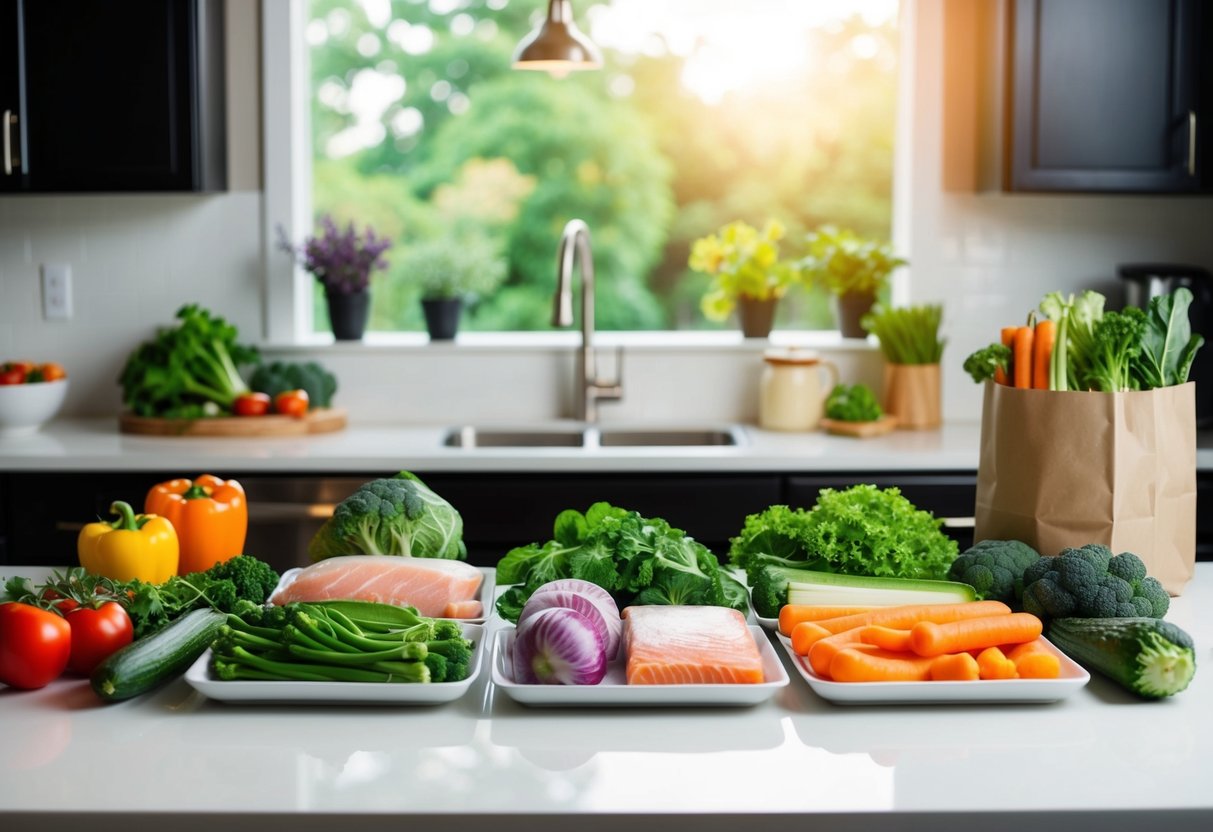
Keto meal prep is a valuable tool for anyone looking to maintain a low-carb lifestyle without breaking the bank.
By focusing on simple recipes, cooking in bulk, and making the most of leftovers, you can save time and money while sticking to your keto meal plan.
For more meal prep ideas, read our 10 Delicious and Effortless Lazy Keto Meal article.
Simple and Easy Keto Recipes
When creating a keto meal prep plan, simplicity is key. Recipes with fewer ingredients not only save money but also make meal prep easier and faster.
Options like omelets with spinach and cheese, grilled chicken thighs, or zucchini noodles with marinara are budget-friendly.
A careful choice of family-friendly meals ensures everyone can enjoy them without extra fuss.
Slow cookers are another great way to prepare meals ahead of time with minimal effort.
Look for recipes that use affordable staples like eggs, canned fish, and seasonal vegetables to keep costs down.
Batch Cooking and Storage Tips
Cooking in bulk is a smart strategy for staying on track with a keto meal plan.
Prepare large batches of foods like cauliflower rice, beef chili, or roasted vegetables to have on hand for the week.
This not only saves time but reduces the temptation to stray from dietary goals.
Proper storage is important to keep food fresh.
Divide meals into individual portions using freezer-safe containers, making sure each is labeled with the date.
Consider investing in airtight containers or resealable bags to extend the shelf life of your prepped food without compromising taste.
For more cooking tips, check out our article on Time-Saving Keto Cooking Tips: Master Low-Carb Kitchen Hacks
How to Repurpose Leftovers into New Meals
Repurposing leftovers for new meals reduces waste and maximizes your budget.
For example, leftover grilled chicken can be transformed into chicken salad, added to broth for a quick soup, or thrown on top of a veggie stir-fry.
Vegetables from a Sunday roast can be the base for a delicious keto-friendly curry or served with a fried egg for a simple breakfast.
This approach not only saves money but also adds variety to your diet, keeping meals interesting.
Cheap Keto Cooking Hacks
There are several ways to prepare keto meals on a budget without sacrificing taste or nutrition.
Buying in bulk is one effective method. Items like nuts, seeds, and cheese often come at a lower cost when purchased in larger quantities.
Look for sales or discounts on ingredients you use frequently in your meal prep.
Incorporate more affordable protein sources like ground meat and eggs, which are versatile and can be used in various dishes.
Also, consider growing your own herbs to save on buying fresh ones. A small herb garden can provide fresh flavor to your meals at virtually no cost.
Upgrade your kitchen with these equipments from Amazon below.
Affordable Keto Recipes
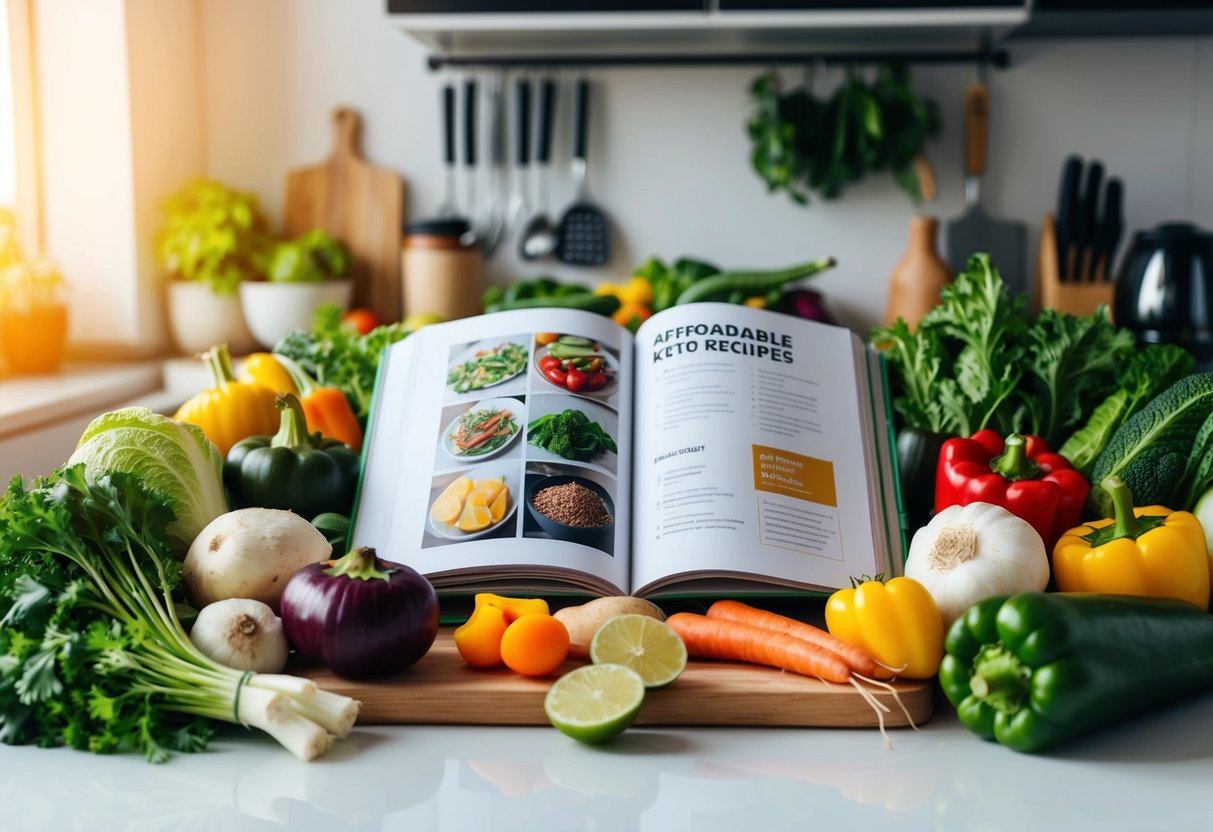
Eating keto on a budget is possible with the right recipes.
By focusing on cost-effective ingredients and simple preparation methods, you can enjoy satisfying meals without breaking the bank.
Hearty Keto Meals on a Budget
For filling, budget-friendly keto meals, omelets and low-carb sandwiches are great options.
Omelets can be made with affordable ingredients like eggs, spinach, and cheese. Add mushrooms and bell peppers for extra flavor.
Low-carb sandwiches using lettuce cups offer a satisfying meal. Fill them with deli turkey, avocado, and tomatoes for a tasty bite.
Pork chops and chicken leg quarters provide protein at a reasonable cost.
When cooked with herbs and spices, they become delicious and keep you full. Serve them with broccoli or zucchini for a complete meal. Some recipes require less than 30 minutes, making them perfect for busy days.
Cost-Effective Keto Snacks and Desserts
For snacks, consider boiled eggs and cheese cubes. These are affordable and easy to prepare.
Trail mix with nuts and seeds offers a quick, crunchy option without extra carbs.
For desserts, choose simple recipes like sugar-free gelatin or chocolate avocado mousse.
These use low-cost ingredients like cocoa powder and ripe avocados to satisfy your sweet tooth.
Cheesecake bites are another favorite, made with cream cheese and almond flour.
Homemade keto granola bars can be made in advance and stored for the week, offering a sweet and crunchy treat.
Each of these options helps maintain ketosis while staying within budget.
Explore more budget-friendly recipes in our Keto Dessert Recipes and Keto Snacks article.
Need personalized support? Our Custom Keto Diet plan can help you manage keto on a budget!
Making Keto Sustainable
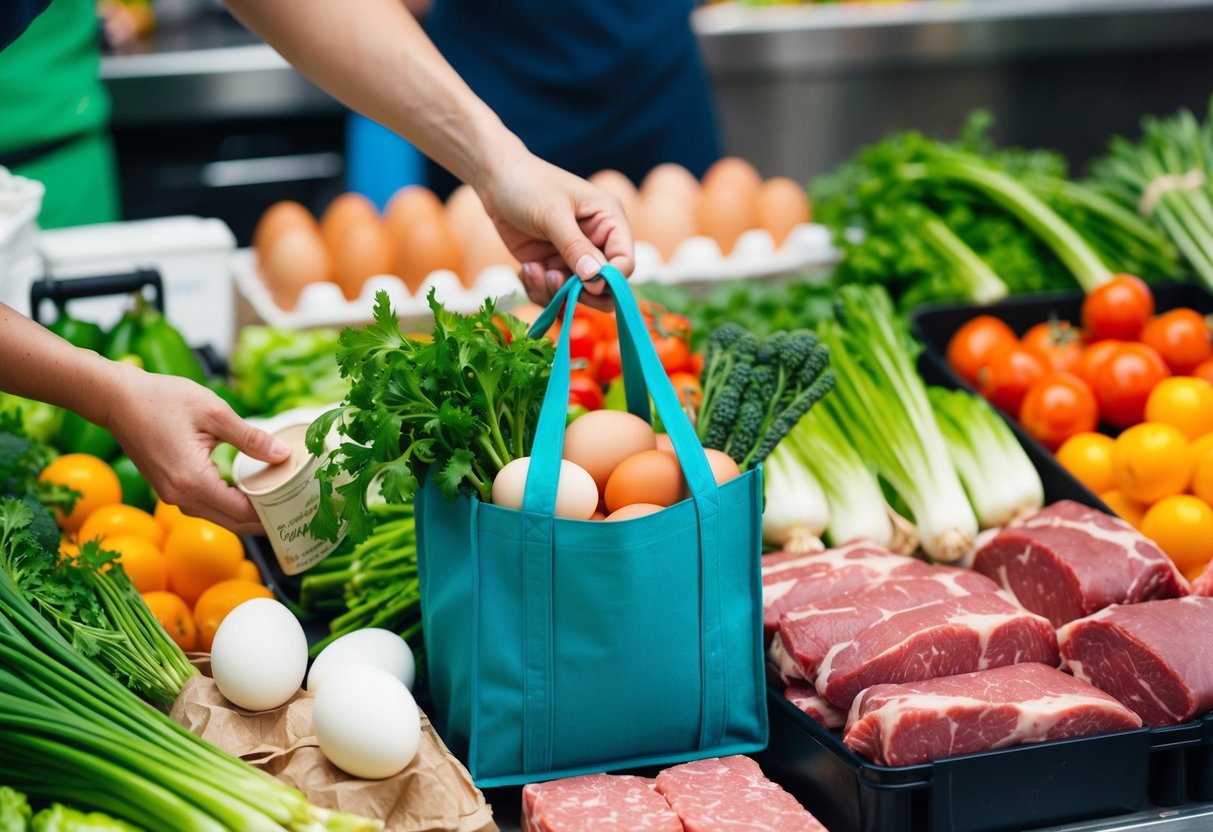
Building a sustainable keto lifestyle involves incorporating this low-carb diet into daily routines while keeping costs down.
It requires mindful shopping and thoughtful meal planning to maintain a budget-friendly approach.
Incorporating Keto into Daily Life
Incorporating keto into everyday life means choosing keto-friendly foods that fit both health and budget goals.
Start by focusing on whole foods like eggs, canned fish, and cheaper meat cuts. These are typically more affordable and can help you stay on track without breaking the bank.
Vegetables are crucial in a low-carb diet. Non-starchy options like broccoli, cabbage, and green beans offer nutrients without high carb content.
Preparing meals in bulk and using leftovers creatively can save both time and money.
This practice also minimizes waste, ensuring each purchase is maximized.
Meal planning helps manage carb intake effectively and can reduce impulsive buying.
Keeping a variety of low-carb snacks on hand, such as nuts and seeds, provides convenient options without the need for expensive keto-branded products.
Long-term Money-saving Tips
Maintaining a budget-friendly keto lifestyle calls for strategic money-saving practices. Buying in bulk offers significant savings, especially for items like nuts, seeds, and coconut milk.
It’s essential to store these properly to maximize shelf life and reduce waste.
Look for sales and discounts to stretch your budget further. Consider growing some of your own vegetables to save money and have fresh, carb-friendly ingredients readily available.
Homemade meals are often more cost-effective than eating out.
Experimenting with vegetable substitutions—like using cauliflower rice or zucchini noodles—can provide variety and keep meals exciting.
This approach helps avoid expensive processed or manufactured keto products, supporting both financial savings and healthier eating habits.
For more on sustainable keto living, check out our Why Am I Not Losing Weight on Keto? Tips to Overcome Common Mistakes post.
Frequently Asked Questions
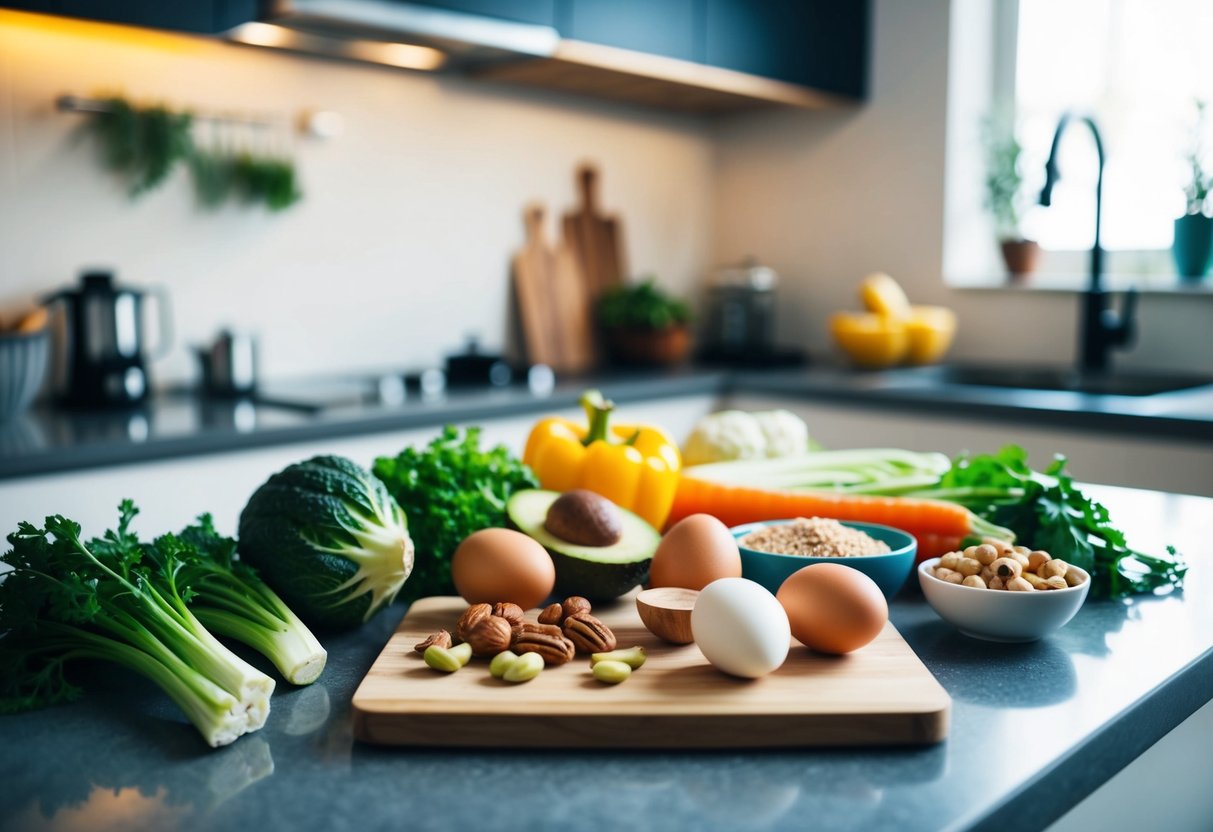
Effective budgeting is key to sustaining a keto diet. Learning which affordable foods to purchase and how to plan meals helps reduce costs.
There are options for meal plans and recipes to suit various needs and preferences.
What are some inexpensive keto-friendly foods for my shopping list?
Eggs, canned fish, and certain cuts of meat like chicken thighs are budget-friendly. Buying frozen vegetables and bulk oils, like olive and coconut oil, can also help save money.
How can I maintain a lazy keto diet without overspending?
Stick to whole foods and avoid processed “keto” snacks. Planning meals in advance and creating shopping lists are effective strategies.
Using versatile ingredients across several meals helps stretch the budget.
Where can I find a free cheap keto meal plan?
Online resources such as blogs and community forums often offer free meal plans. Websites dedicated to the keto community sometimes provide downloadable meal guides or budget-friendly recipe collections.
What are budget-friendly low carb meals suitable for a family?
Large batches of dishes like stews or casseroles using low-cost ingredients such as ground beef or pork can feed a family. Incorporating seasonal, inexpensive produce can also help reduce meal costs.
Can you suggest affordable keto recipes for regular meals?
Recipes like zucchini noodles with marinara sauce or scrambled eggs with spinach are affordable and easy to prepare.
Stir-fries using inexpensive cuts of meat and frozen vegetables are quick, budget-friendly dinner options.
How do you manage a keto diet cost-effectively each month?
Planning meals monthly and taking advantage of sales on staple items helps manage costs effectively.
Buying in bulk and freezing meats and vegetables can reduce grocery expenses over time.
Joining budget-focused keto groups online can provide additional tips and support.
Conclusion
Eating keto on a budget is possible with a bit of planning and smart shopping.
Prioritizing whole, unprocessed foods can cut costs while keeping meals nutritious.
Shopping in bulk helps save money.
Buying nuts, seeds, and meats in larger quantities can be more cost-effective.
Local farmer markets and discount stores are also good places to find deals.
Choosing affordable protein options like eggs and canned fish is key.
These provide essential nutrients without breaking the bank.
Non-starchy vegetables can be purchased in bulk and stored to last longer.
Planning meals ahead of time can reduce waste and expense.
Using meal plans and sticking to a grocery list keeps spending in check.
Preparing multiple meals at once saves both time and money.
Incorporating store-brand products is another way to reduce food expenses while maintaining the diet.
These products are often cheaper but of comparable quality to name brands.
Plan your next meal with our Keto Diet Schedule: Planning Meals for Optimal Results.
Transform your kitchen routine – start your Custom Keto Diet journey today for effortless, budget-friendly keto meals!





